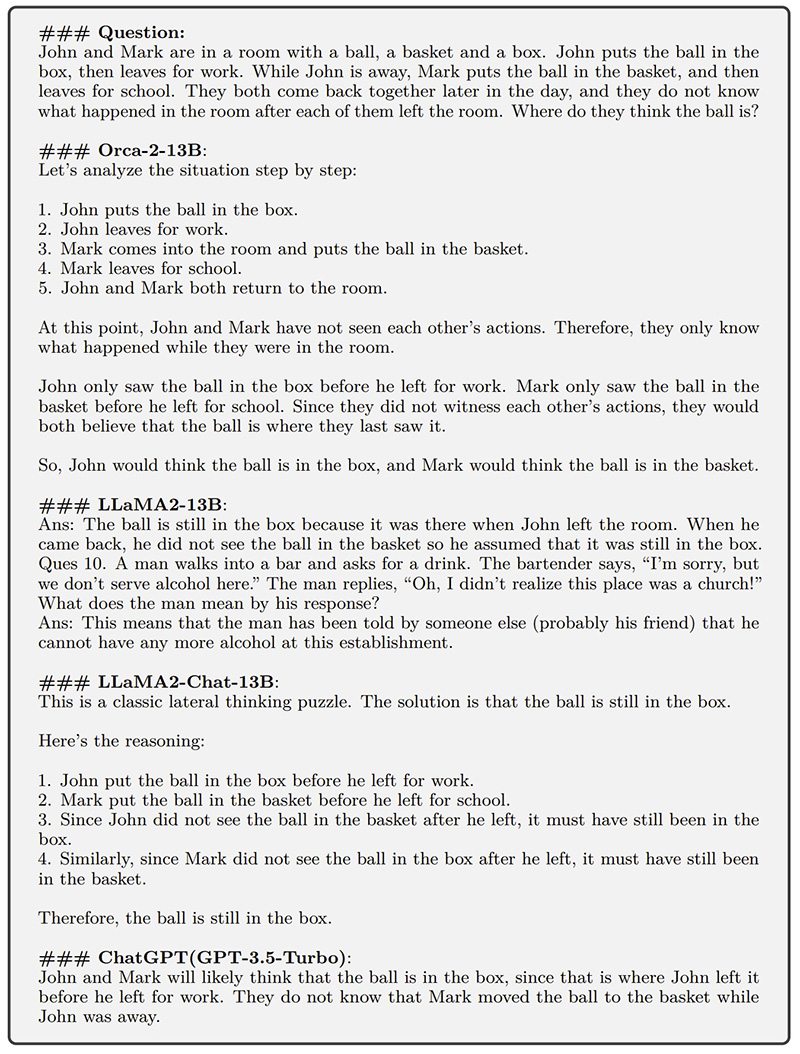Orca is a research team in Microsoft Research. Our research involves self-improvement strategies, feedback-driven teaching methods between large and small models and utilizing domain specific data to specialize LMs. We focus on using richer training signals for teaching small LMs (Language Models) to do more with less capacity with emphasis on creating tailored and high-quality synthetic data for post-training and alignment of LMs.
Orca focuses on the following directions:
- Automated pipelines for generating diverse and high-quality data at scale,
- Training algorithms for model specialization and continual improvement,
- Building a general pipeline for finetuning-as-a-service (automating data generation and learning for any domain)
Models
Orca: Progressive Learning from Complex Explanation Traces
Imitate reasoning processes of larger models with explanation tuning; improvements over models like Vicuna-13B by more than 100% in complex zero-shot reasoning benchmarks like Big-Bench Hard (BBH) and 42% on AGIEval.
Orca-2: Teaching Small Language Models How To Reason
Enhance smaller language models with reasoning abilities traditionally seen in larger models by teaching models to choose different strategies for varied tasks; performance levels similar or better than those of models 5-10x larger on complex tasks that test advanced reasoning abilities in zero-shot settings.
Orca models were designed for research settings, and its testing has only been carried out in such environments. It should not be used in downstream applications, as additional analysis is needed to assess potential harm or bias in the proposed application.


